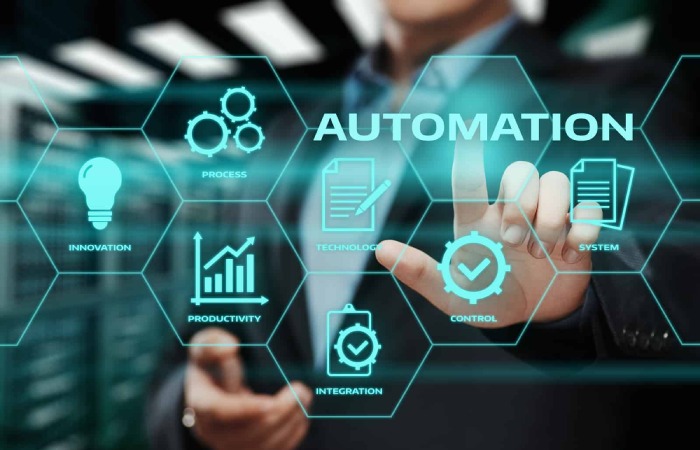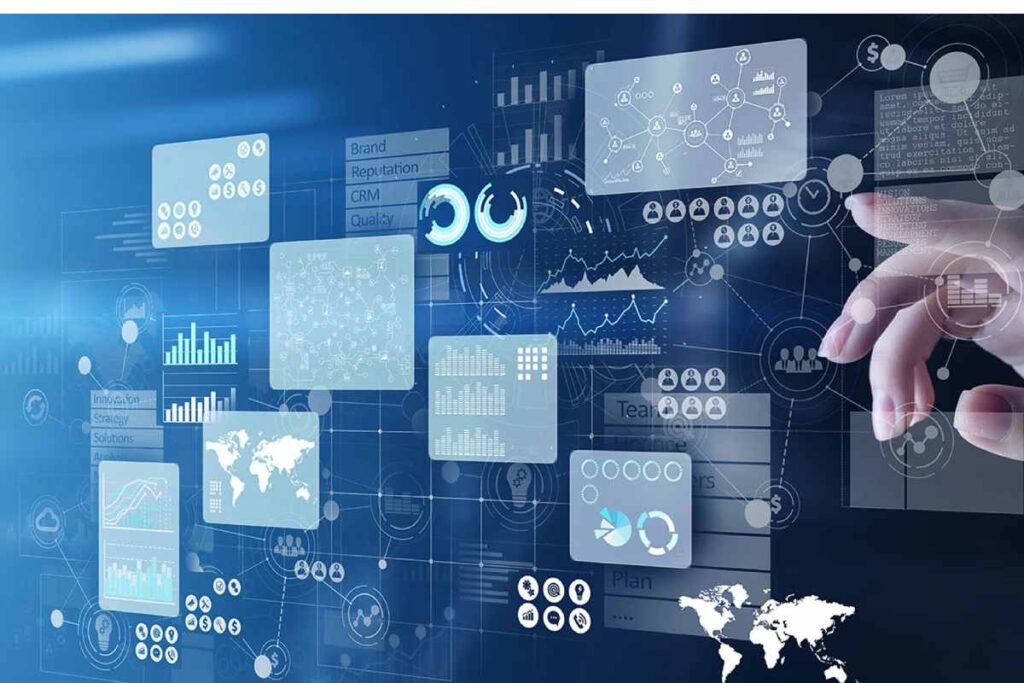For 20 years, online merchants have had an advantage Business of Automation over their Main Street competitors thanks to data about their customers and their ability to interpret it.
Most traditional retailers have now opened e-commerce stores to regain market share. They are building databases of their customers and using new artificial intelligence technologies to become more efficient and increase their profits.
In this article, we will look at what AI is. Then, we’ll share 18 examples of how AI is helping retailers cut costs, keep their customers happy, and compete with their online competitors.
Automation and Artificial Intelligence Explained
The retail business is challenging. The stakes are so high that retailers need automation and artificial intelligence to compete. It is too risky to rely solely on human decision-making in many matters.
Thanks to AI’s ability to examine data and resolve glitches, it can answer the following questions faster, cheaper, and over time more accurately:
- What do customers want to buy in the fourth quarter, and what quantity?
- How many of these items do we need to stock in individual store warehouses and for online shoppers?
- If a client wants to buy X, what else would he be interested in buying?
- Who will spend the most money on groceries in the next three months?
- Who is most likely to upgrade to a quality product?
- Which customer group will respond best to the new promotion?
How AI-powered forecasts are changing retail
Artificial intelligence improves the customer and staff experience in stores and online. Its forecasts also enable purchasing the right amount of inventory and raw materials, reducing costs and waste for shops and their supply chain partners.
Here are some ways retailers can harness the analytical power of artificial intelligence and mechanism learning.
Improve the quality of service in the store.
Retailers are improving the in-store customer experience with the following adaptations:
Adaptive displays in the store. These displays show customers personalized offers on wall-mounted LED screens as they walk over the store because of their near-field communication (NFC) and Bluetooth-enabled phones.
Showcases taking into account local features. Get the most out of your displays by displaying only products your AI app predicts your local customers will need throughout the year.
Your personalized customer experience. Take customers on a 60-minute guided tour of your store. Ensure the items the AI indicates they want are in stock and ready before entering the warehouse. The more personalized your customer experience, the better your chances of maximizing sales.
They have automated personalized experience. Equip your glasses in the locker room with sensors. If a person’s facial features indicate that they are unhappy with the clothes they are trying on, Business of Automation ask the AI to suggest alternatives on a nearby screen. If customers see something they like, they can click a button, and the seller will deliver the items they want directly to their checkout.
Tablets in the store. Encourage the customer to use the tablet in the store if what they want is not in stock at that location. If they find something they need from your entire range, they can place an order there and then arrange for it to be delivered to their home or a nearby store.
Store layout. Changing a store’s layout is expensive and disruptive. Artificial intelligence can be used to model how people will move around a store based on different configurations and how that will impact costs before creating a new layout.
Know what products to show customers online Business of Automation.
AI can also drive online sales using the following features:
Custom home pages. Use your homepage to show customers the products they will most likely want based on their online behaviour and past purchases at similar times in recent years.
Proposal tools. Place images and “more like this” buttons on every product page to show them something free based on their preferences and what other customers have bought. For example, a shopper might see a pair of stylish shoes complementing the jacket they’re looking at.
Personalized marketing. AI can create email and text marketing campaigns containing individual messages for each customer. Business of Automation The satisfaction is based on their responses to previous campaigns and browsing/purchasing history, which can improve conversion rates.
Chatbots with artificial intelligence. Companies can offer in-store skills but only online. See, going to your favourite store and having a two-way chat with a chatbot that helps you determine what you want based on your responses and the AI’s knowledge of what you’ve purchased or asked about in the past.
Be the retail employer of choice Business of Automation.

Here’s how employees can benefit from implementing AI in business:
Store employees can sell more. Sellers can sell more by showing customers what other people who bought the item at the point of sale also bought. AI can also suggest other products based on a customer’s past purchases.
Web designers have the best roadmaps. Artificial intelligence helps web designers and developers control the sales process. They can create optimal, personalized, unique online customer experiences based on interaction and engagement data.
Staffing levels are in line with demand. Provide your customers with the high level of service they deserve by ensuring you have enough staff to serve them. AI can help companies predict the number of employees needed in the store, customer service department, and D2C distribution warehouse.
Enable tighter, more efficient retail operations.
AI benefits the wider business, including procurement and management teams, through the following advances:
Trendspotting. Fashion retailers now use artificial intelligence forecasting to determine their collections’ styles, patterns, colours, and fabrics by analyzing blog and social media content. All retailers can also use broader economic data to forecast product inflows and outflows.
Sentiment analysis. Find out what consumers think about your make and its products by analyzing mentions on social networks and discussion forums in real time. Identify user pain points to guide product development.
Tighter supply chain management. Expressing what customers do and don’t want means purchasing departments and product buyers can better determine what products they want from suppliers.
Better inventory management. Shoppers can also predict how much of each item they need and when they need it. This reduces the likelihood of running out of stock, which means more profit, higher profits, and happier customers.
Reactive pricing. Dynamically change in-store and online prices to match or beat competitors’ prices, season (e.g., higher prices on home goods in the spring), and weather (e.g., host a sale day if rain is expected). Increase.
Welcome to the new retail paradigm
Old forecasting methods are time-consuming and very expensive. Business of Automation Data scientists had to build a new data model for each forecast they were asked to generate, and each forecast required a two-month lead time.
On the other hand, AI-powered forecasts are affordable and can give you answers from the app within a day. Moreover, many applications can analyze their results to find ways to make more accurate predictions in the future.
AI allows you to improve interactions, embed deep customer personalization into your in-store and online marketing, increase sales, and strengthen customer loyalty—meaning you can be proactive rather than reactive in a crisis.
Machine learning and artificial intelligence predictive technologies represent the future face of modern business. To stay ahead, you must get there before your customers know where they’re going.

